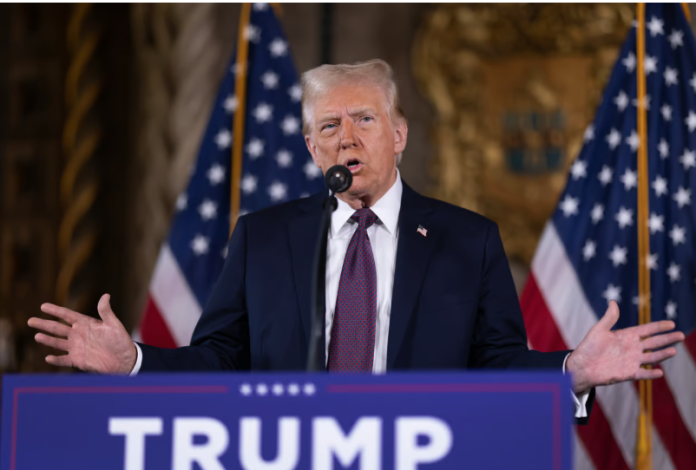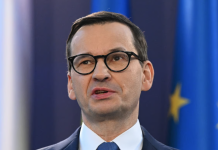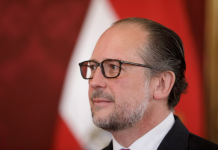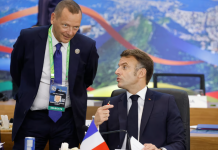Incoming U.S. President Donald Trump wants NATO members to spend a whopping 5 percent of GDP on defense — more than double the alliance’s current spending target.
That’s causing consternation among Europe’s cash-strapped governments.
“I don’t think it will be 5 [percent], which at this time would be impossible for almost all the nations in the world,” Italian Defense Minister Guido Crosetto said in the Italian parliament on Wednesday.
Italy will spend 1.57 percent of GDP on defense this year and aims to reach 2 percent in 2028.
But Trump wants more cash, fast.
“Europe is in for a tiny fraction of the money that we’re in [for],” Trump said during an appearance at his Mar-a-Lago resort in Florida late Tuesday. “We have a thing called the ocean in between us, right? Why are we in for billions and billions of dollars more money than Europe?”
A 5-percent target is more than any NATO member currently spends. The U.S. last year spent 3.4 percent of its GDP on defense; Poland comes closest, spending 4.12 percent in 2024, and aims to boost that to 4.7 percent this year.
Spending tends to be higher the closer a country is to Russia, and the three Baltic countries are dramatically increasing their military budgets.
“This is the message that Estonia has been advocating for years,” Estonian PM Kristen Michal told POLITICO in reaction to Trump; his country will spend 3.7 percent of GDP on defense this year. “This is a clear signal to [Russian leader Vladimir] Putin that he should not dare to test NATO’s nerves and that we are prepared for it.”
Sweden, which last year spent 2.1 percent of GDP on defense, also thinks it’s a good idea to spend more.
“There is a broad consensus in Sweden that we need to invest more in our defense,” said Swedish Foreign Minister Maria Malmer Stenergard. “U.S. governments have long urged European countries to increase their defense spending and to bear more of their own defense costs. We share this view.”
But many European countries are facing budget crunches and are struggling to reach even the 2-percent goal.
Germany is scrambling to figure out a way to get to 2 percent again this year, but the leader of the opposition Christian Democrats, Friedrich Merz, who will almost certainly win a snap federal election set for next month, isn’t taking Trump literally.
“The 2, 3 or 5 percent are basically irrelevant; what matters is that we do what is necessary to defend ourselves,” he told national media.
German foreign policy expert Ralf Stegner, with the ruling Social Democrats, called Trump’s demand “complete madness.”
But Chancellor Olaf Scholz was more cautious, saying Wednesday that NATO countries “will strengthen our defense capabilities. There is a regulated procedure in NATO for precisely this purpose.”
Elsewhere, France is trying to figure out how to keep increasing defense spending as the country’s budget process is derailed by political uncertainty, while the U.K. has not set a clear timeline for reaching its target of 2.5 percent.
The Czech government said this week it would hit 2 percent for the first time ever. “It is realistic to talk about 3 percent in several years,” Czech Prime Minister Petr Fiala said Wednesday.
Big spender
Even though the U.S. isn’t the biggest spender in terms of GDP share, the size of its economy means that Washington carries more of the load in NATO than other countries.
In 2023, for example, the U.S. accounted for 68 percent of NATO spending with $916 billion, according to statistics compiled by the Stockholm International Peace Research Institute, a think tank. The alliance’s European member countries made up just 28 percent.
However, the jump proposed by Trump is so extreme that it would strain the budgets of all member countries, with the possible exception of Poland. It’s difficult to see how it would fit with Trump’s domestic calls to slash government spending, which are a key part of his political message.
That’s why some analysts see the 5 percent call as a performative stunt.
“It seems to me that the point of this demand is that it’s designed not to be met,” Ruth Deyermond, a senior lecturer at the Department of War Studies at King’s College London, posted on X. “It looks as if the point of the 5 [percent] demand is for it to be unachievable — the intention seems to be that states will fail.”
Whether `Tump is making a good-faith argument for increasing defense budgets, or setting NATO up for failure, there is a growing consensus among allies that the current 2-percent goal has to be increased. It’s insufficient to meet regional defense plans and NATO’s overall military capability targets as the alliance reacts to the threat posed by Russia.
Spending targets are expected to be updated during a leaders’ summit at The Hague in June.
NATO’s new Secretary-General Mark Rutte called in December for “a shift to a wartime mindset” in national planning, but said it was too soon to set an exact spending goal.
Norwegian Prime Minister Jonas Gahr Støre told POLITICO in December that there should be no rush to set a new spending target. “I’m not coming in and committing in a statement to a figure … that’s a serious thing you have to plan and commit to in your budget planning.”
This article has been updated.






















